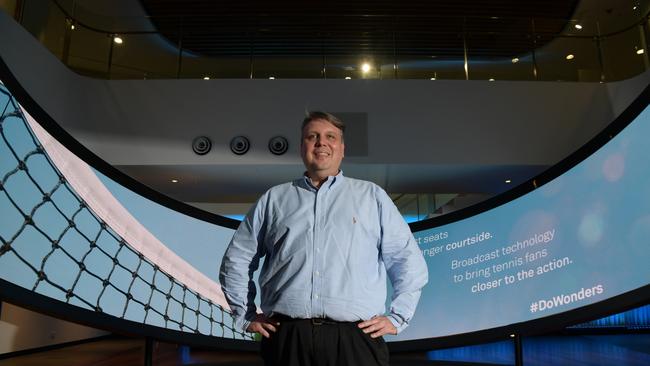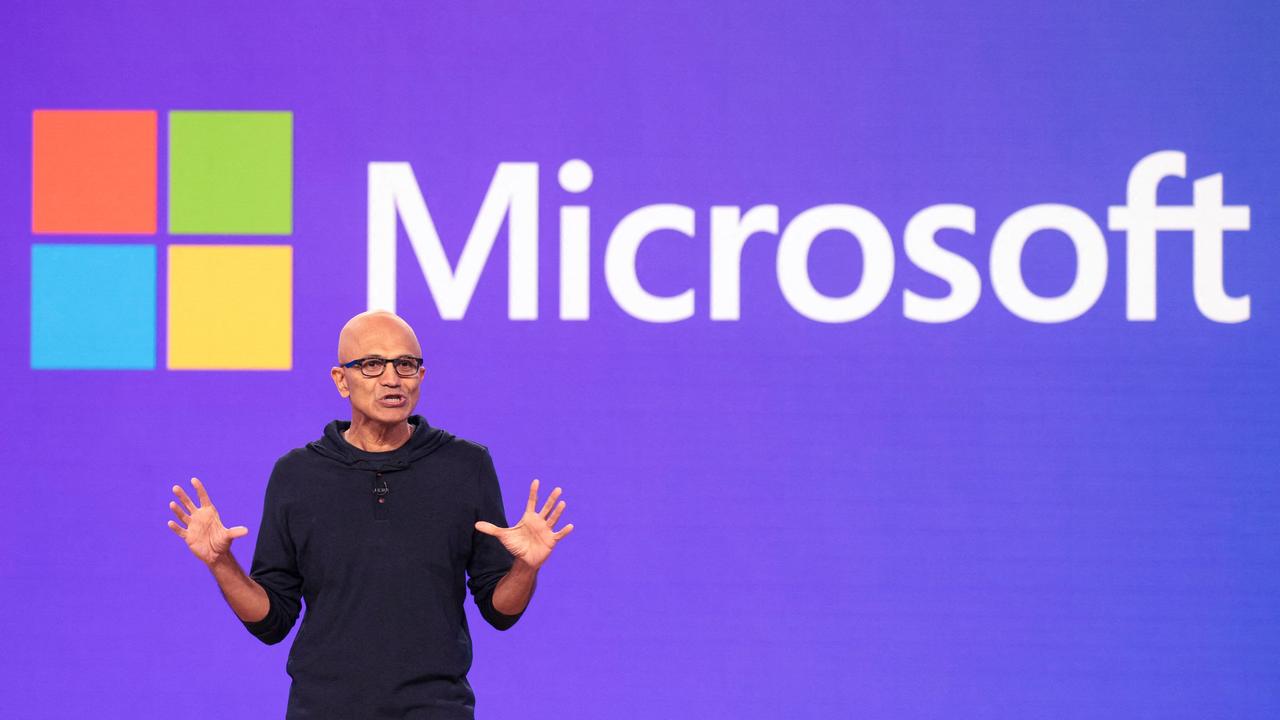Talent war is just beginning, Telstra Venture warns in top predictions for 2022
Businesses are going to battle like never before for talent as Covid-19 sparks an historic shift in working, Telstra’s venture- capital arm says.

An arms race among businesses to attract the best talent is set to intensify this year, along with a threefold increase in digital companies with a market capitalisation of $10bn or more, and a rampant rise in cyber attacks, according to Telstra’s venture capital arm.
Telstra Ventures – founded in 2011 and spun off two years ago as an independent venture-capital fund – has released its top predictions for 2022, and the Covid-19 pandemic, now in its third year, has continued to dominate.
Telstra Ventures managing director Matthew Koertge said the Covid-19 pandemic has sparked the biggest shift to the humble workday since the industrial revolution.
While the virus has killed the century-old 9-5 workday, Mr Koertge said keeping employees on tap 24/7 was not working, fuelling burnout and other mental health disorders.
He said while the “fluid workforce” had created opportunities for tech companies, he warned employers not to get too carried away with investing in software aimed at facilitating remote working.
“People inherently want human-to-human connection, not just adding another SaaS (software as a service) enterprise tool to their workflow,” Mr Koertge said.
“Businesses will need to move beyond technology solutions that merely help staff to do their jobs outside of the office but empower employees to boost their productivity and engagement in the fluid workplace.
“The fluid workforce is spurring growth in venture capital investments, with significant growth across EdTech, Cloud, Network, and Security Tech seen in 2021. The next step is to design and build tools to augment and support how today’s fluid workforce live their lives and want to collaborate with colleagues.”
If businesses fail to provide workers flexibility, which now defines the current workforce as “work revolves around personal lives rather than the other way around”, employers risk losing staff amid a tight labour market.
Covid-19 has ignited a talent war as well as a phenomenon dubbed “the great resignation” as waves of people quit their jobs in an apparent search for more meaning, flexibility or money. The arms race threatens to spark a crisis, turbocharging inflation and triggering earlier interest rate rises as fast-food chains, such as McDonald’s, to high-end white collar businesses, struggle to attract workers to key positions.
Mr Koertge expected demand to grow for services from companies like Forage, which offers virtual work experience. Forage is one of Telstra Venture’s investments and aims to bridge the gap between theoretical and real world learning. The company has already signed on investment bank titans Goldman Sachs, Citi and JP Morgans as clients.
“2022 will continue to feature a tight hiring environment and employers need to fight hard to differentiate their employer brands to attract the talent they need to grow their businesses,” Mr Koertge said.
“We expect more spending by companies on innovative platforms like Forage to attract the right talent, especially in areas related to digital skills.
“The demand for technologies like this will only increase as talented people will continue to have a plethora of options for where to work and the economy heats up. Transparency and open cultures will benefit.”
Training is high on Telstra Ventures’ list of predictions as the world grapples with a computing skills gap of more than one million people.
“Every company will require more and more technology talent, creating a massive wave requiring effective retraining and upskilling programs,” Mr Koertge said.
“Companies like Springboard, which offer immersive, remote courses where every student gets an industry expert as a mentor, will grow as more and more people see value in acquiring in demand digital skills and personalised help. The most flexible programs with industry relevance will win.”
The demand for more digital services was likely to create a “stampede of decacorn”, companies which have a market capitalisation of $10bn or more, Mr Koertge said. He added that “physical companies” were struggling to keep pace with the agility of their tech counterparts, which were now dominating major indices.
“Today, there are 41 companies around the world that claim the title of ‘decacorn’, while new unicorns pop up every week or so. We anticipate this number will triple in the next five years, with the majority focused on data, (artificial intelligence) or the digital world,” he said.
“If you look at the S&P 500, there are 68 info-tech companies – more than any other sector. On the international stage, 39 of the Fortune Global 500 are technology companies, with two in the top 10.
“The major advantage of digital businesses is that they’re primed for a global consumer base. Netflix, for example, built on domestic success to offer original programming in 40 countries and in 21 languages, in just a few years.”
But as more companies digitise, the threat of cyber attacks intensifies. Cyber attacks have surged during the Covid-19 pandemic, costing Australians $33bn, according to the Australian Cyber Security Centre, which received 67,500 cyber crime reports in the past year – an increase of 13 per cent on the previous 12 months.
Telstra Ventures has branded the attacks a “modern day version of warfare” that is going to require company directors to step into the vanguard to protect health and hospital systems and vulnerable Australians.
“Somewhere between 60 and 80 per cent of companies fell victim to ransomware in the last year. Little wonder that we’ve seen governments and corporations stepping up to try and take the fight to the criminals,” Mr Koertge said.
“However, accessible, usable tools mean that attacks are easier to orchestrate, hence ransomware payments from US banks almost doubling between 2020 and 2021. As the frequency of these attacks increases, so does the power of the financial lure for criminals. This problem won’t go away anytime soon and I think it will get worse in 2022 before it gets better.”
Other predictions included a rise in companies offering a “transition layer” to interact with the myriad metaverses and streamline the digital economy. Mr Koertge said there was a need for “interoperability and common infrastructure”.
“After announcements from Facebook and Microsoft in 2021, metaverses have fully entered the public consciousness. But with multiple metaverses that promise new ways to interact with the world, how will these metaverses interact with one another? There is no winner-take-all dynamic here.
“In 2022 we’ll see innovators rushing to define and refine a ‘translation layer’ that allows for transactions, regardless of fiat, crypto or NFTs (non fungible tokens) being exchanged across different platforms. This same infrastructure would connect and confirm our identities across siloed metaverses, helping to build a global, virtual economy.”
China features on Telstra Ventures’s list of predictions, with more than 87 per cent of digitally active consumers in the Asian powerhouse accessing fintech services. Mr Koertge said this was the highest user uptake in the world, alongside India.
“In 2022, this will kickstart a virtuous cycle of rapid innovation and development: fintechs will drive business advantages for China’s enterprises and SMEs, further feeding demand for their services. This will, in turn, pave the way for more innovation and new companies, at a time when antitrust and data privacy protection acts are helping start-ups to compete fairly with the larger players.
“XTransfer, for example, is a company that enables rapid, cross-border transactions, and is expected to support Chinese companies’ international business. In short, we see a potent blend of appetite, space in the market and sympathetic lawmaking.”




